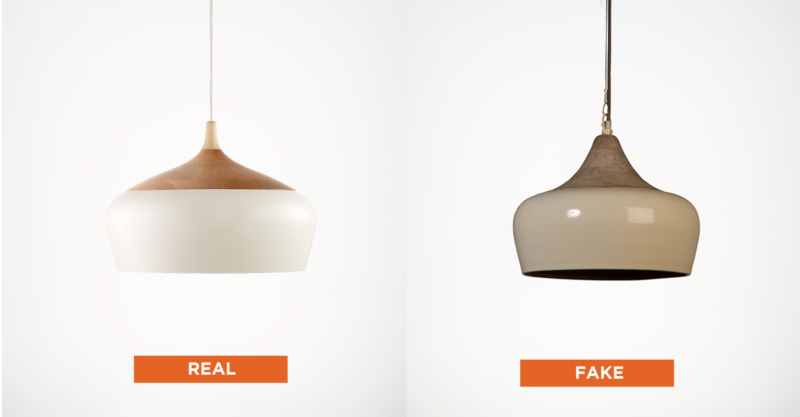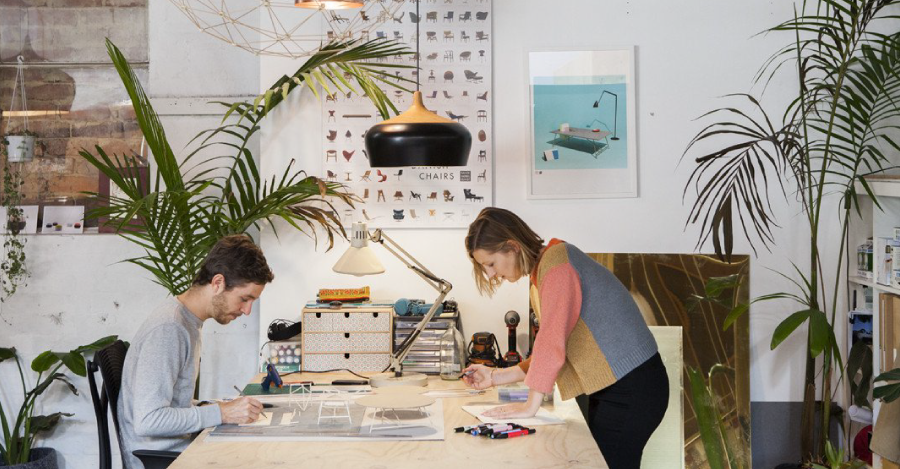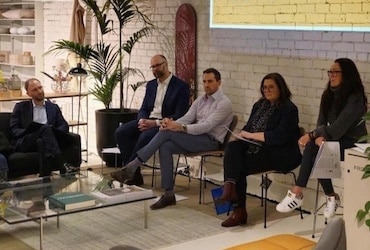Kate Stokes from CocoFlip
“The Coco Pendant was designed at the beginning of my career and didn’t register the design as I had no concept it would be such a huge success. It was my first product shown publicly when I was invited to show it in an exhibition.
In Australia, works of design cannot be exhibited or published (including blogs and social media) before applying for design protection with IP Australia. So I had no other options to protect my work from being copied.
The light had been in a market a short time and was selling very well, but we discovered it had been copied by an Australian company renown for selling badly made knock-offs of original designs that are made in China. The counterfeit designs are then widely distributed by lighting retailers and online stores. It’s a massive sales network and impossible for us to defend ourselves.
“We believe in quality not quantity“
Kate Stokes, CocoFlip
FINANCIAL LOSS
Due to copies, our annual financial loss is around $95,000 AUD. As an independent studio – this loss stops us from developing new collections or investing in our business. Because the design wasn’t registered (with IP Australia), we have no legal options. Not that we could afford lawyers to fight this.
REPUTATION DAMAGE
We pride ourself on the quality of our work and with so many low-grade copies circulating our reputation has also been affected. There’s confusion as to whether we are producing the inferior copies ourselves. Recently a newspaper article compared our genuine product with a copy. It’s a shame the media doesn’t support Australian designers.
NO ‘GRACE’ PERIOD
Australian Intellectual Property (IP) law demands products are not shown publicly (internet inclusive) prior to applying for protection. We are one of the few countries in the world with this requirement. Most countries have between 1-2 years ‘grace period’ – this allows designers to get their products right before launching them commercially.
In Europe and Britain designers market test by showcasing early versions of their designs to get feedback and refine the final product. Australia currently has no ‘grace period’ “

CASE STUDY 02: Other Australian companies copying our designs
“In 2015 a fellow designer alerted us that an inferior copy of Coco Pendant was exhibited at an industry trade fair, promoted as their own design. Interior designers and retailers ordered large quantities of our copied light. Whilst the brand in distributes the copies internationally, usually referred to as ‘Coco Pendant’, they use a different name in Australia.
“A considered purchase is a purchase for life“
CASE STUDY 03: Chinese websites use our photography to sell copies of our design
Another designer contacted us after seeing a Chinese company advertising a copy of our Coco Pendant. The company was even using our own photography of our own product! We’re a small studio and chasing, objecting, and attempting to enforce our photography copyright is time-consuming and disheartening. And takes us away from our design business.”

Kate Stokes established Melbourne-based design studio COCO-FLIP in 2010 with Haslett Grounds.
Coco Pendants are handmade in Melbourne from Victorian Ash and spun aluminium, and have received several notable design awards.
RETAILERS // CULT Design (Aust /NZ), Tongue & Groove (Melb), Workshopped (Syd), designFARM (WA), Aptos Cruz (SA), designCRAFT (ACT), Simon Anchor (TAS) or direct from their website.
READ MORE // AUTHENTIC DESIGN ALLIANCE Case Studies




